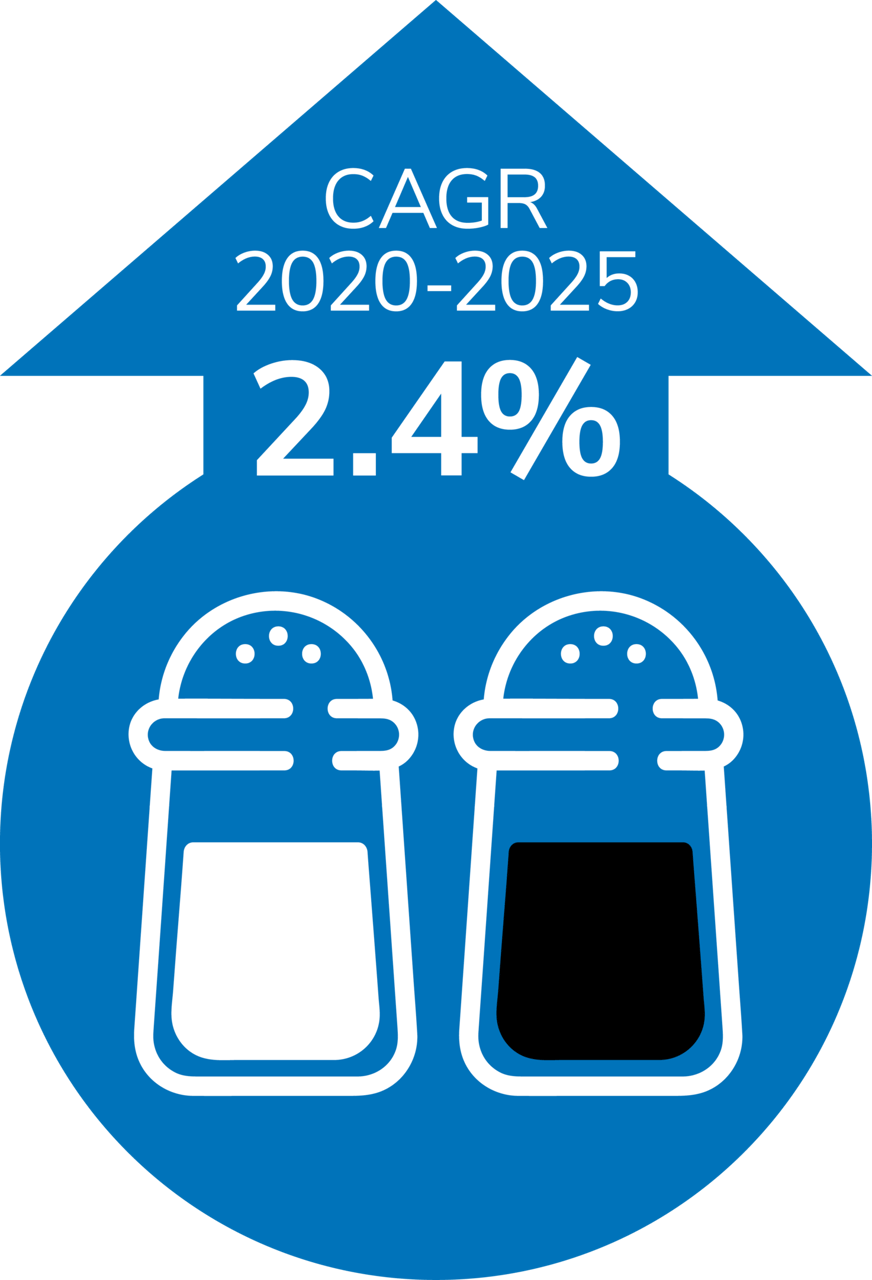
Spice and Salt Suppliers Shake Up Packaging
Functionality, sustainability and shelf appeal will continue to be key factors in the choice of packaging in this market, with formats made from plastic continuing to edge out other materials in most cases.
Demand for packaging used with spices, dry mixes and extracts is projected to grow 2.4% per year to $1.1 billion in 2025 from a high base in 2020, when the market for these products was boosted by the pandemic. While growth will be below historical norms, the market will benefit from:
- Increasing popularity and variety of spices offered by retailers
- Rising use of premium packaging for product differentiation purposes
- A lingering higher level of interest in home cooking and baking
Spice, Dry Mix and Extract Packaging Market






Key Trends:
Plastic bottles will see the largest gains going forward as manufacturers transition.
Spices and herbs continue to be the largest applications for packaging.
Dry mix packaging will see some declines following elevated 2020 levels.
Source: The Freedonia Group
Plastic Bottles to Experience the Largest Gains as Manufacturers Transition
McCormick and Morton — the biggest spice and salt suppliers, respectively — have begun transitioning away from metal and paperboard canisters toward plastic bottles, which are lighter and easier to recycle:
- In Morton’s case, the bottles feature a plethora of convenience features and are designed to have increased shelf appeal. They are also transparent, allowing consumers to see the salt inside and gauge how much is left.
- McCormick has used plastic canisters in many of its products for some time and has moved away from metal for iconic brands like Old Bay, in part to increase sustainability of these high-volume products. The company has also pledged to decrease the environmental impact of its plastic packaging by using more recycled content in its creation and ensuring that the containers can be reused or recycled by 2025.

Source: The Freedonia Group
Spice & Herb Packaging Continues to be the Largest Market
Spices and herbs are intensive users of packaging, as containers tend to be smaller and use higher value features than other seasonings. In addition, an increasing variety of ethnic and specialty spices continues to become available. Spices and herbs are the only category to make significant use of glass packaging, which imparts the perception of quality and freshness and is commonly used with premium spices and herbs.
Demand for Dry Seasoning Mixes Packaging to Face Declines from Elevated Level in 2020
While all spice and seasoning categories saw increased demand in 2020 as consumers cooked and baked at home more frequently, dry mixes experienced an especially high bounce in part because they are premeasured and easy to use in the kitchen. This was especially important for consumers with little or no cooking experience who began cooking more during the first year of the pandemic. While sales of dry mixes are expected to return more sustainable levels, demand is expected to remain above historical levels. Even as consumers begin to spend more time out of the home, those who became accustomed to using dry seasoning mixes are likely to continue to do so more often.